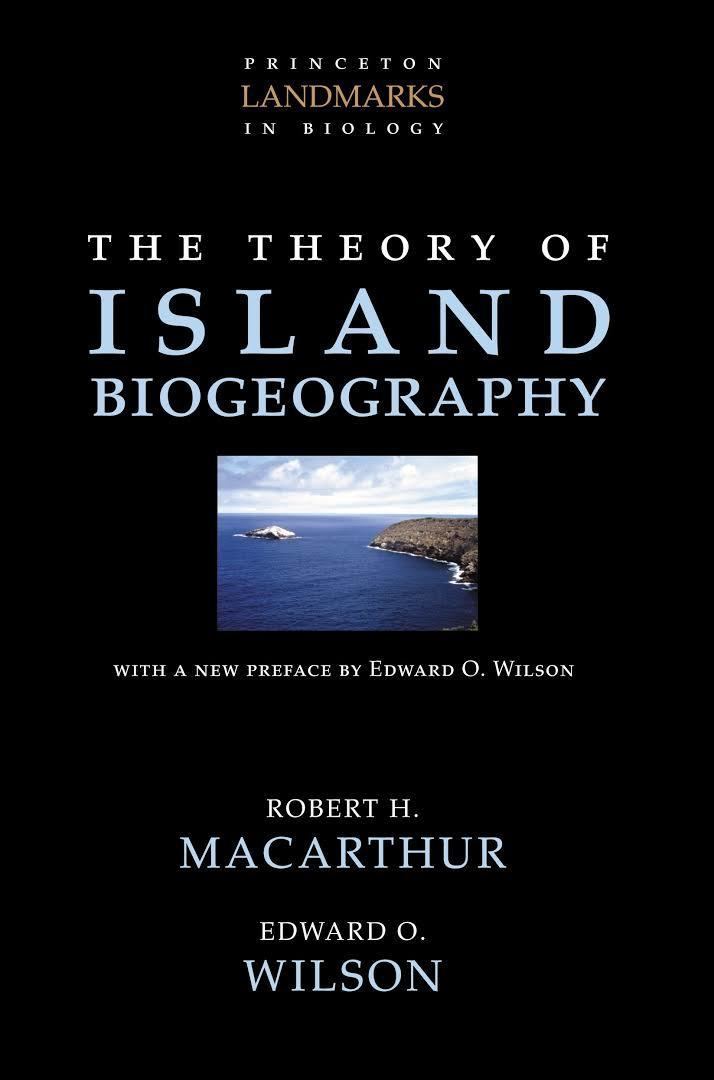Illustrator John Kyrk Language English Pages 203 Page count 203 | Country United States Publication date 1967 Originally published 1967 ISBN 0691088365 | |
 | ||
Similar E O Wilson books, Biogeography books | ||
The Theory of Island Biogeography is a 1967 book by Robert MacArthur and Edward O. Wilson which laid the foundations for the study of island biogeography. An edition with a new preface by Wilson was published in 2001.
Summary
MacArthur and Wilson try to predict species richness based on island size (area) and isolation (distance). This theory does not try to predict species composition or abundance. It also considers species richness to be in dynamic equilibrium between immigration and extinction. Extinction and colonization rates are affected by island size and distance. Larger islands have more species and closer islands have more species. Species richness depends on size and distance. The theory also explains that more species means lower colonization rates and higher extinction rates.
In the figure shown below, the intersection point represents dynamic equilibrium between immigration and extinction. At these points, species richness is neither increasing nor decreasing. The term "island" was used as an example for biogeographical purposes. The "island" is any area of habitat suitable for a specific ecosystem, surrounded by an expanse of unsuitable habitat. The theory of island biogeography was experimentally tested by E. O. Wilson in the mangrove islands in the Florida Keys. The islands were fumigated to clear the arthropod populations in order to study species richness. The immigration of species onto the island were then observed, and it was found that the species completely recolonized within a year. The islands that were closer to the mainland recovered at a faster rate, which follows the theory of island biogeography. The mangrove islands were all relatively the same size and could not be studied to see if larger islands had higher species diversity.
